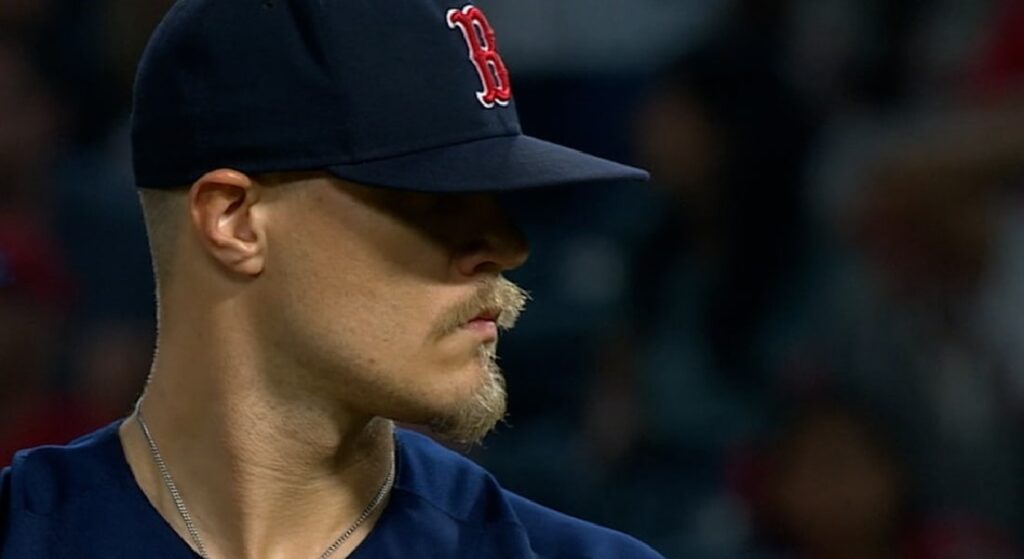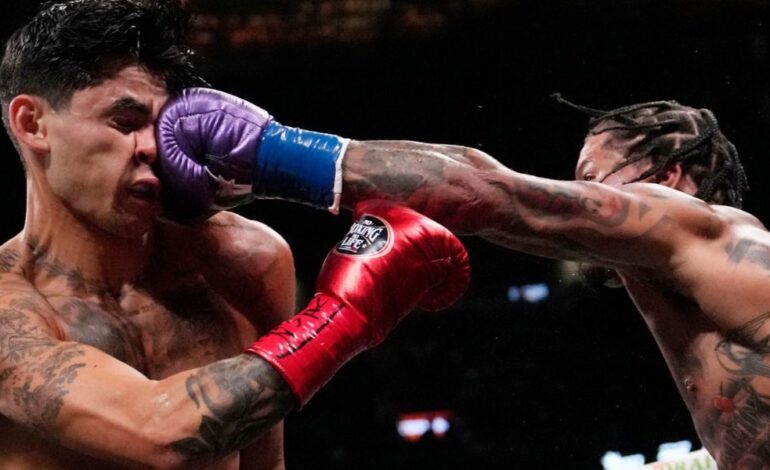I’ve been an ardent believer that Tanner Houck isn’t a starter. He’s never had the command and control or been efficient enough to get through at least five innings consistently.
(That and he took to the closer role quite well in 2022.)
But his latest start opened my eyes to his potential in the rotation.
However, while Houck’s most recent start was eye-opening, it was only one start against one of the least disciplined offenses in MLB. I’m not convinced enough yet to change my mind about him completely.
Not how this team is constructed.
The Red Sox have an impending rotation crunch and are currently using a six-man rotation through at least April 27. They’d like to go back to a 5-man rotation at some point. Plus, how the Sox’s starters have pitched so far, they don’t need another four or five-inning starter — they need length.
Boston’s bullpen has been overworked and is thin, mainly due to injury, and is an arm short with six starters.
How the roster is right now, the 26-year-old fits this specific team best as a reliever who can pitch whenever they need him.
By all means, keep him stretched out. A starter will get hurt eventually. But it’s just not Tanner Houck’s year to be a full-time starter.
Maybe next season.
Tanner Houck’s Career Game as a Starter

Tanner Houck had the best and longest outing of his career as a starter Thursday, leading the Red Sox to an 11-5 win against the Twins.
He pitched seven innings, allowing three runs on six hits and a walk and struck out seven. He threw 96 pitches, 63 for strikes.
The last time Houck completed six innings was in September 2020.
Houck generated a season-high 16 whiffs, six with his nasty slider and six with his much-improved splitter — both also season-high whiffs of any of his pitches.
The splitter is his best pitch this season, but until his start against the Twins, in which he used it 20 percent of the time, he hadn’t thrown it more than 14 percent of the time in any start.
He was on another level against Minnesota, pitching like his baseball life was on the line.
But, “It wasn’t a tryout,” Alex Cora said.
Tanner was “very aggressive in the zone,” Cora added. “He did an outstanding job. If he can harness his stuff in the strike zone, he can go deeper into the game. It’s not about his ability, or third time through the lineup, it’s kind of like, efficient, the stuff is going to be better. And then he can (go deep).”
It’s always been about command/control and efficiency for Houck.
With the addition of a cutter to accompany his splitter, slider, and sinker, he’s on his way to potentially becoming a viable starting pitcher.
Houck said of his cutter and splitter, “As a starter, it’s huge. It just helps set up my two best pitches, between the sinker and the slider. It just gets them off those two, it gets lefties off of the sinker a little bit more, with the cutter. The splitter obviously adds a different element as well, that they have to respect.”
He isn’t quite there yet, though.
Houck’s Best Fit Is Still as a Reliever

Why?
The Twins have the second-highest strikeout rate, the highest whiff rate, the sixth-lowest expected batting average, the ninth-lowest expected weighted on-base average, and they are 26th in MLB in walk rate.
In his previous start vs. the Angels, Houck threw 90 pitches over four innings with four walks despite allowing only two runs and striking out six.
Los Angeles has the ninth-best walk rate, the fifth-worst xBA, and the ninth-highest whiff rate. They are 15th in strikeout rate and 13th in xwOBA.
Additionally, the rotation faces a crunch as all eight MLB-quality starters return.
Garrett Whitlock and Brayan Bello are back; James Paxton isn’t too far behind them.
If the Paxton-as-reliever experiment continues to fail, Paxton, Whitlock, Bello, Sale, and Whitlock are all in the rotation.
It’s possible the Sox might shift Corey Kluber, but I don’t see them giving up on him after only a handful of starts.
It’s also not impossible they send Bello down — but again, I don’t see it. They probably would’ve kept him down instead of calling him up after his rehab assignment.
Nick Pivetta is the one starter Boston can rely on to give them at least five innings and 30-plus starts a season.
A six-man rotation only makes sense if your starters consistently go five to six innings. Red Sox starters have struggled to do that. Those short outings have strained the bullpen already, and we’re not even a month into the season.
Tanner Houck just offers the Red Sox more out of the bullpen right now than he does as a starter.
Yes, there’s enough in the back end of the bullpen without adding Houck if this rotation keeps trending in the right direction, thanks to the emergence of Josh Winckowski. But Houck makes a solid bullpen even better and gives Cora a third multi-inning option/another Winckowski-type to help keep the high-leverage guys fresh.
I believe this rotation will eventually get their act together, but it might take a bit longer. In the meantime, I want as strong a bullpen as possible, with as many multi-inning options as possible.
For daily Red Sox coverage, follow me on Twitter. For more MLB coverage, follow @BellyUpBaseball and check out Belly Up Sport’s other MLB content.






